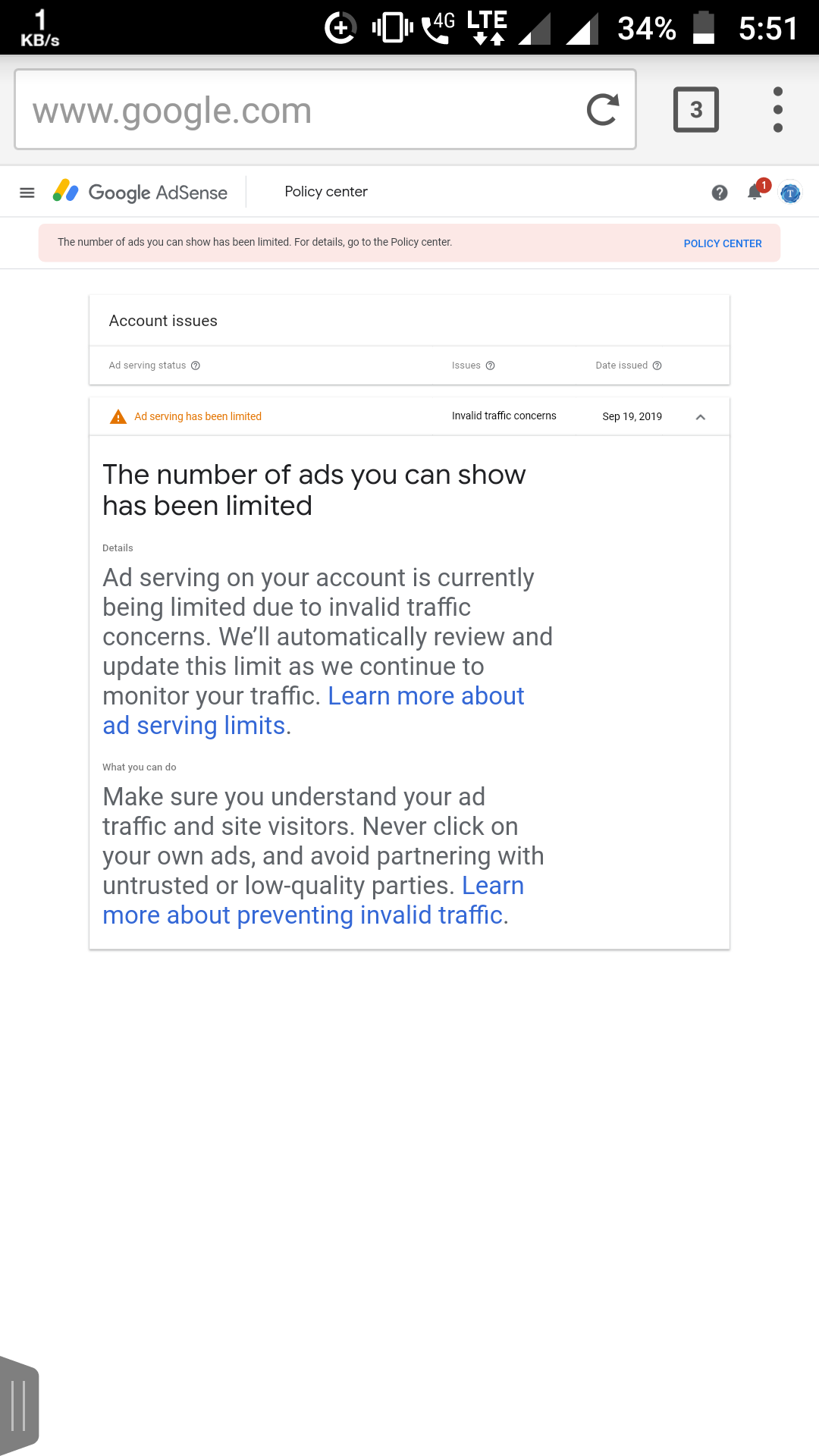Google works hard to maintain an ads ecosystem that protects advertisers, publishers and users from fraud and bad ad experiences. As a result, Google may sometimes place a limit on the number of ads your AdSense account can show. This might be a temporary ad serving limit while we get to know you and evaluate your traffic quality, or it might be because we’ve identified invalid traffic concerns in your AdSense account.
If you’re monetizing your website with display ads, the chances are that AdSense is part of your ad stack. For many publishers starting, AdSense is often the only ad network they use. Having your ad serving limited through AdSense is a nightmare to most. It essentially means that your monetization efforts are limited, and you’re not able to reach your full ad revenue potential through AdSense.
While your AdSense account is being limited by Google, you still have access to it and can monitor the situation frequently. Google recommends that you continue creating content and marketing your site. However, with an emphasis on traffic quality and AdSense policies.
⇒Join us on Telegram for more Sure and Accurate football-winning tips every day...click here

Account being assessed : Ad serving on your account is being temporarily limited while we assess your traffic quality. We’ll automatically review and update this limit as we continue to monitor your traffic. Unfortunately, we can’t say how long this will take.
How you can help to prevent invalid traffic
As you may know, AdSense publishers are ultimately responsible for the traffic on their ads. For this reason, it’s critical that you diligently monitor your ad traffic to ensure that your account is compliant with our policies and not accruing invalid traffic.
We encourage you to review the information in our beginner’s guide to AdSense policies. In addition to that, here are some tips to help you prevent invalid traffic on your ads:
- Understand your ad traffic and site visitorsBreak down your traffic reports into meaningful segments using URL channels, custom channels, or even Google Ad Manager ad units. This will help you gauge how changes to traffic sources or implementation can affect your ad traffic.
Next, use Google Analytics to get detailed information about your site visitors, and be on the lookout for any suspicious user behavior. (Where do my users come from, either geographically or on the Web? Which pages do they view on my site?).
- Avoid partnering with untrusted / low-quality partiesSome publishers have had issues with invalid traffic when partnering with low-quality ad networks, search engines, or directory sites in efforts to increase traffic to their site.
- Don’t click on your own ads, even if you think it’s okay to do soEven if you’re interested in an ad or looking for its destination URL, clicking on your own ads is still prohibited. Instead, you can use the AdSense publisher toolbar. Keep in mind that even when we filter clicks on your own ads, we don’t ignore those clicks completely; if it appears to us that a publisher has been clicking on his own ads to inflate his earnings or an advertiser’s costs, we may disable the account to protect our advertisers.
- Double- and triple-check your implementationSome publishers use custom implementations that may have unintended consequences on their ad requests. Also, check your ads in different browsers and platforms to ensure they work as you expect.
- Consult the AdSense Help ForumIf you have a question, it’s likely that another publisher has encountered the same issue, so join in a discussion to learn more, or start your own. Let others know if you’ve encountered a third party or situation that tends to generate invalid traffic.




